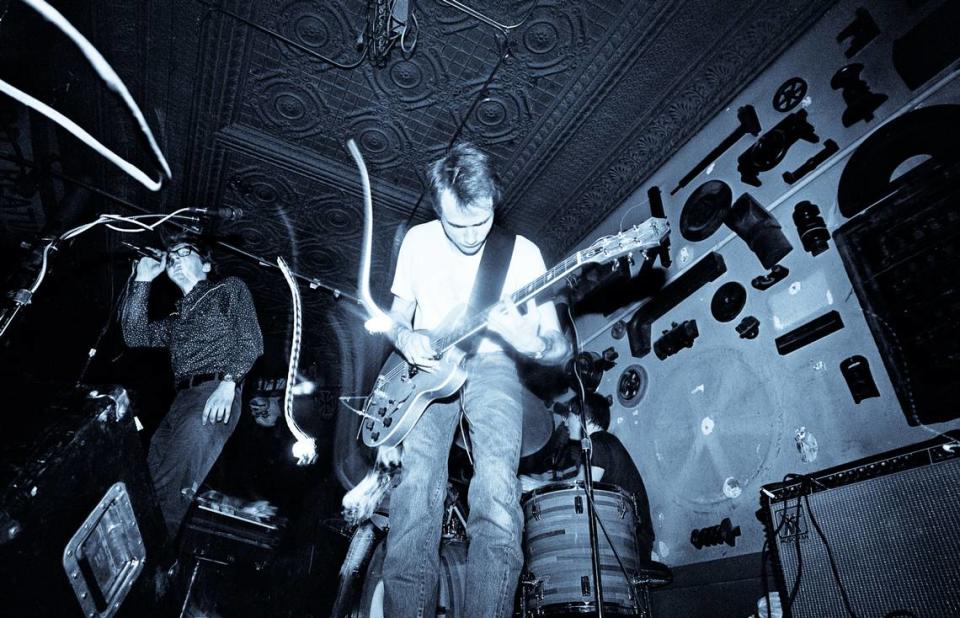Wichita band flirted with success. 40 years later, these ‘nerds’ are having a moment
In some respects, the members of the Embarrassment defied the odds.
The band blossomed in the dry cultural soil of Wichita in the late 1970s and early 1980s, helped birth a music scene, toured the country and won the respect of some of the most influential artists of the day: John Cale of the Velvet Underground, poets Allen Ginsberg and William S. Burroughs, filmmaker Jonathan Demme. They opened for Iggy Pop, and legend has it that R.E.M. withdrew from a Kansas City gig because that band didn’t want to follow a raucous Embarrassment set.
But the big break never came. Ultimately, the major record labels and influential radio stations didn’t see much potential in a Midwestern art-rock act with songs about British mathematicians and patio furniture.
“We were from Kansas,” said frontman John Nichols, “and we looked like nerds.”
In 1983, after five years as a band, the Embarrassment called it quits. But the fervent fandom that had surrounded the group never really died out. Over the ensuing decades, the Embarrassment became a kind of secret handshake among record collectors, music critics, local radio DJs, cool older sisters and other zealous pursuers of the talented and obscure. (Robert Christgau, the so-called “dean of American rock critics,” called the Embarrassment a “great lost American band.”)
Among that cohort are Dan Fetherston, 43, and Danny Szlauderbach, 35, the two filmmakers behind “We Were Famous, You Don’t Remember,” which makes its world premiere Friday, Sept. 30, at the Tallgrass Film Festival.
“Even though they were a largely undiscovered band, I always felt like if you walked into a legitimate record store, the people working there would know who the Embarrassment was,” said Szlauderbach, who grew up in Wichita and now lives in Lawrence. “They have this quiet but pretty large fan base just under the surface. I felt like this was a documentary that was just waiting to be made by somebody.”
The Embarrassment — three-quarters of the band, anyway — will also reunite after the premiere for a performance at the Orpheum. The members were interviewed for the film, but will be seeing it for the first time at the Orpheum.
“I don’t know what kind of story they plan on telling about us,” said guitarist Bill Goffrier, the only former Embarrassment member currently living in Kansas. “We were always a band that was interested in creating music that would have a lasting quality, though, so I’m honored and a little tickled by their interest in documenting our existence.”
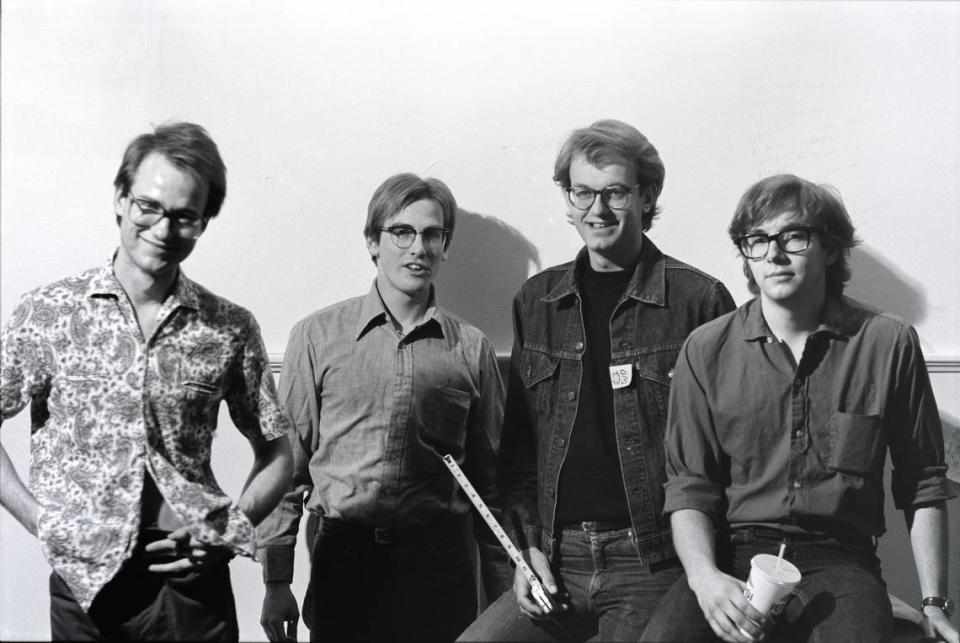
Kansas kids
Critics and fans often struggled to describe the Embarrassment during the band’s heyday, and time hasn’t changed much on that front. Not even the band’s members seem to agree what kind of music they made.
“The more I think about it, we really were a punk band,” said Goffrier.
“We weren’t a punk band, we weren’t new wave — we were a power pop band,” said drummer Brent “Woody” Giessmann.
“I always just saw us as rock ’n’ roll,” said Nichols.
Whatever it was, they started creating it early. Elementary school friends, Goffrier and Giessman wrote their first song together at the age of 7. At Coleman Middle School they met Nichols. After graduating from Southeast High, they enrolled as art majors at Wichita State University, where they met bassist Ron Klaus. (Klaus is not participating in the reunion. His whereabouts are unknown.) The Embarrassment played its first show in 1979, debuting a sound influenced by the Sex Pistols, the Stooges and the Velvet Underground — exotic stuff in Wichita at the time.
“We were trying to make music that we couldn’t really access being in a town like Wichita that was so rooted in country and western music and classic rock,” said Giessmann.
“The raw materials you need for a music scene just weren’t there yet,” said Goffrier. “There was one record store, Poverty Records, where you could find the good stuff. But for live music, it was a lot of redneck bars with cover bands playing Southern rock and country. But we had the example of bigger cities. In Boston or New York, we knew, people there had to create a place to play this type of music. And so that’s what we tried to do — plant the seeds of a punk scene.”
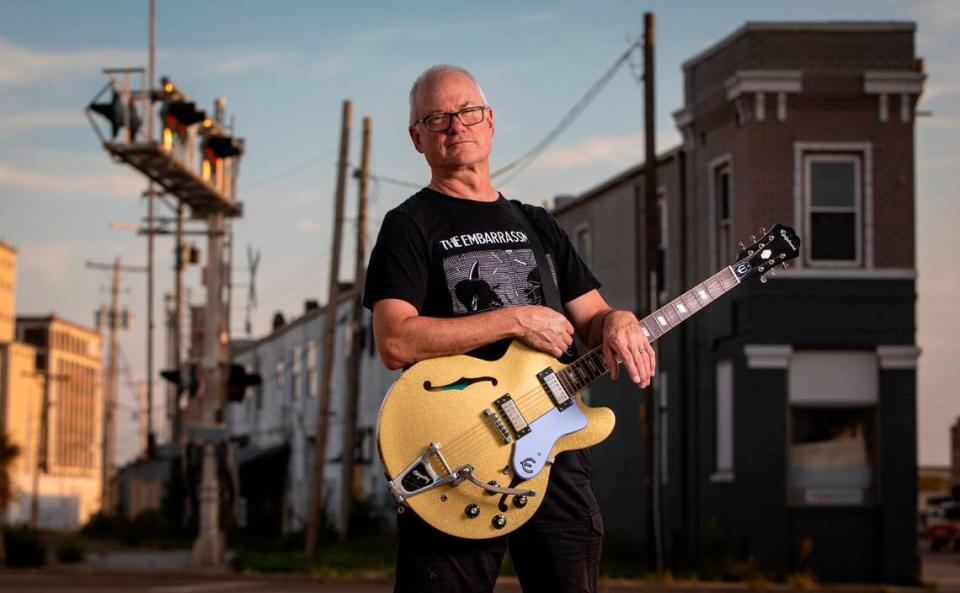
That scene was nomadic and often underground but grew to include a few above-board Wichita locales. One was the Cedar, a bar on 13th Street with no history of hosting live music.
“There was no stage or anything,” said Nichols. “But when we started showing up, a young guy had just purchased it from the original owner. We just told him we’d like to clear out a corner and charge at the door, and that he’d sell a bunch of beer if he let us do that. And I think everyone ended up being pretty well pleased with that agreement. We played a lot of weekends there.”
The Spot, at 1621 E. Douglas, also hosted the band. A 1980 Eagle story about the growing new wave movement noted that the Embarrassment had an “almost cult-like following,” with the manager of the venue reporting “girls wearing makeup like you wouldn’t believe. Their eyeliner would extend all the way back to their temples.”
Goffrier, Giessman and a handful of other artists eventually moved into the Flatiron Building at 21st and Broadway. They painted in studios upstairs and used the downstairs space for band rehearsals and occasional live performances. Around this time, a local TV cameraman who Goffrier said was “trying to get in on the MTV thing” filmed a live Embarrassment show at the Flatiron that is featured prominently in “We Were Famous, You Don’t Remember.”
The video captures both the band’s appeal and perhaps why record labels weren’t banging down their door. The performance is raw but tuneful, deadpan but brimming with nervous energy — not too far off from the poppy post-punk R.E.M. was cooking up in Athens, Georgia, around the same time. Visually, though, it’s a lot of khaki pants and thick eyeglasses. One song, “Godfrey Harold Hardy,” is an ode to a mathematician known for his achievements in number theory and mathematical analysis.
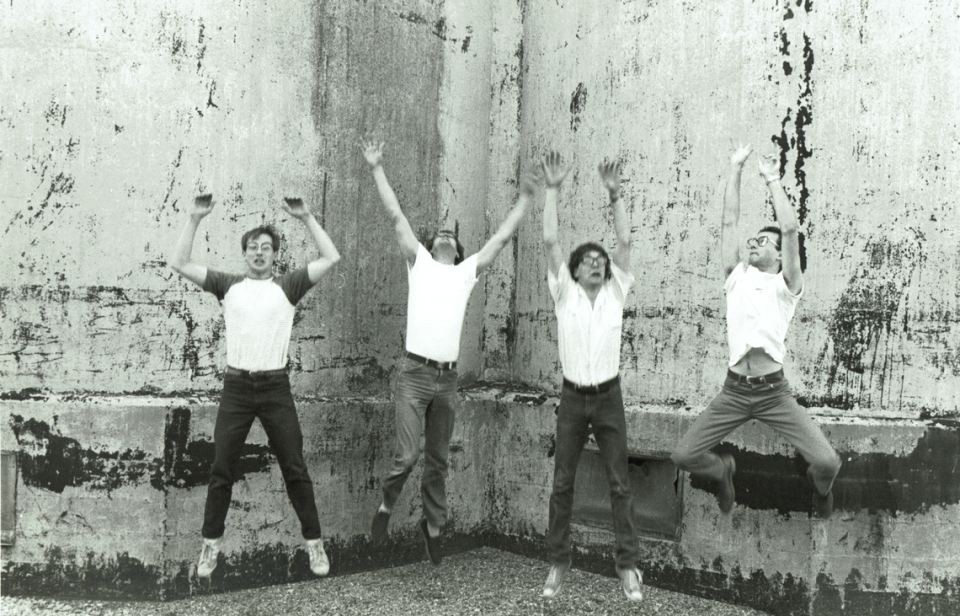
There was a small but growing constituency for it. In Lawrence, boosted by KJHK DJs and a local fanzine called Talk Talk, the Embarrassment soon adopted the college town as a kind of second home. “We could turn up at Off the Wall Hall or the Lawrence Opera House and play Friday and Saturday nights, three sets a night,” Goffrier said. “It was such an animated scene.”
And they toured. In Tulsa, the Embarrassment opened for Cale, who complimented their song “Wellsville” (about a town off the highway between Wichita and Lawrence) and later talked with the band about producing one of their records.
Demme was so dazzled by his first exposure to the Embarrassment, at a show in Chicago, that he wrote to several record labels on their behalf, encouraging them to sign these unknown Kansas kids to a deal. (A few years later, Demme would go on to direct “Stop Making Sense,” the legendary concert documentary about Talking Heads, a band somewhat like the Embarrassment.)
But nothing big ever panned out, and in 1983, the band’s manager, Dan Rouser, stepped away from the group. “We had really relied on Dan to keep the business part of things moving and operating, and we were pretty rudderless without him,” Goffrier said. Less than a year later, the band hung it up.
“We were just frustrated,” Giessmann said. “It was exhausting. It seemed like we couldn’t get where we needed to go from Kansas but we didn’t know where to go to make it happen.”
“The documentary won’t have any recording of the long road trips or the disagreements with nightclub owners trying to stiff us or any of the other road hazards you encounter when you’re living like that,” Nichols said. “But I think those kinds of mounting frustrations added up over the years. I was still enjoying what we were doing. But I couldn’t say that for everybody.”
Klaus hopped on a motorcycle and lit out for the Arizona desert and disappeared. Nichols took a job with an aviation company. Goffrier moved to Boston and soon started Big Dipper, an indie-rock act that achieved a kind of cult success not unlike that of the Embarrassment. He eventually returned to painting and has been a Wichita-based artist since 2013. Giessmann also initially moved to Boston but relocated to Los Angeles after joining the roots-rock group the Del Fuegos. The band was signed to a major label and opened for Tom Petty and ZZ Top.
“The Del Fuegos were more commercially acceptable, more successful,” Giessman said. “With a name like the Embarrassment, I don’t think we were ever gonna reach that level.”
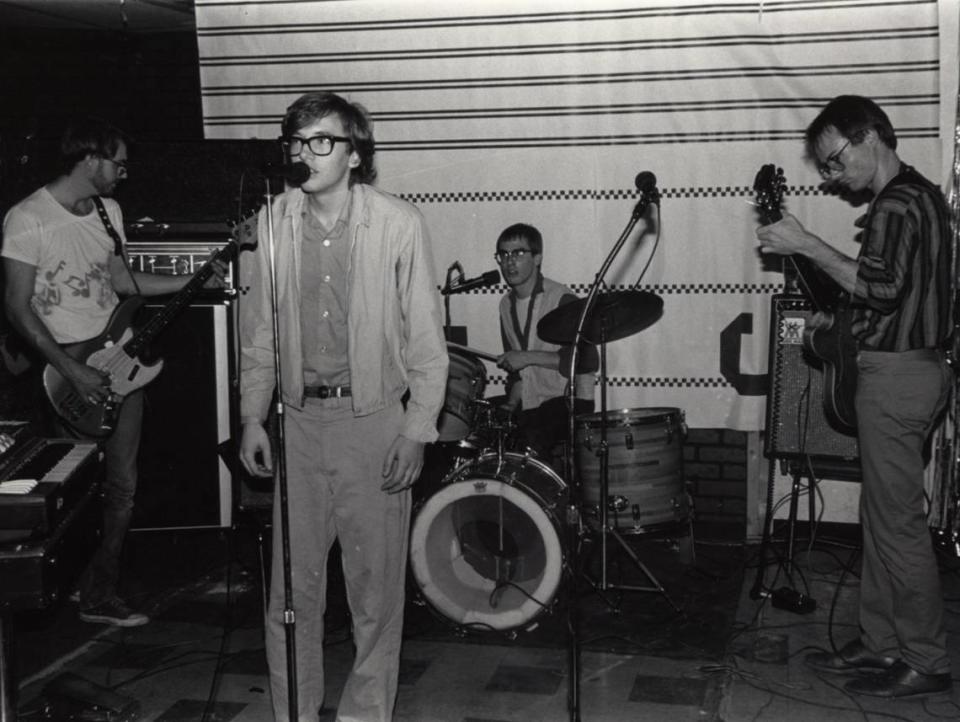
A long time coming
But the band lived on, thanks to evangelizing fans and advances in technology. The geeky group had geeky fans who were early adopters of the internet, and information about the Embarrassment was being shared through file transfer services as early as 1986. The first Embarrassment fan site appeared in Yahoo precursor Jerry and Dave’s Guide to the World Wide Web all the way back in 1994.
Though he was a preschooler when the Embarrassment disbanded, Dan Fetherston accessed the band in the early 2000s through the technological tools available at the time: the online music database Allmusic.com and Audiogalaxy, an MP3 file sharing system that was briefly popular following the demise of Napster.
“A friend of mine at (NYC record store) Kim’s Video lent me the (Embarrassment) ‘Heyday’ CD, and I later tracked down the ‘Retrospective’ tape,” Fetherston said. “Their song structures were so bizarre and surprising. They were true artists in that way, messing with the formula of pop songs. I could just never get them out of my head.”
Fetherston went so far as to write Goffrier and Giessmann, both living in Boston at the time, to ask if they’d be interested in recording an album by his band, Oxford Collapse. Giessmann, who by then was running a successful outpatient substance abuse disorder program specializing in artists and musicians, responded to Fetherston that, “The money you have is maybe too little,” a phrase Oxford Collapse subsequently turned into a song title.
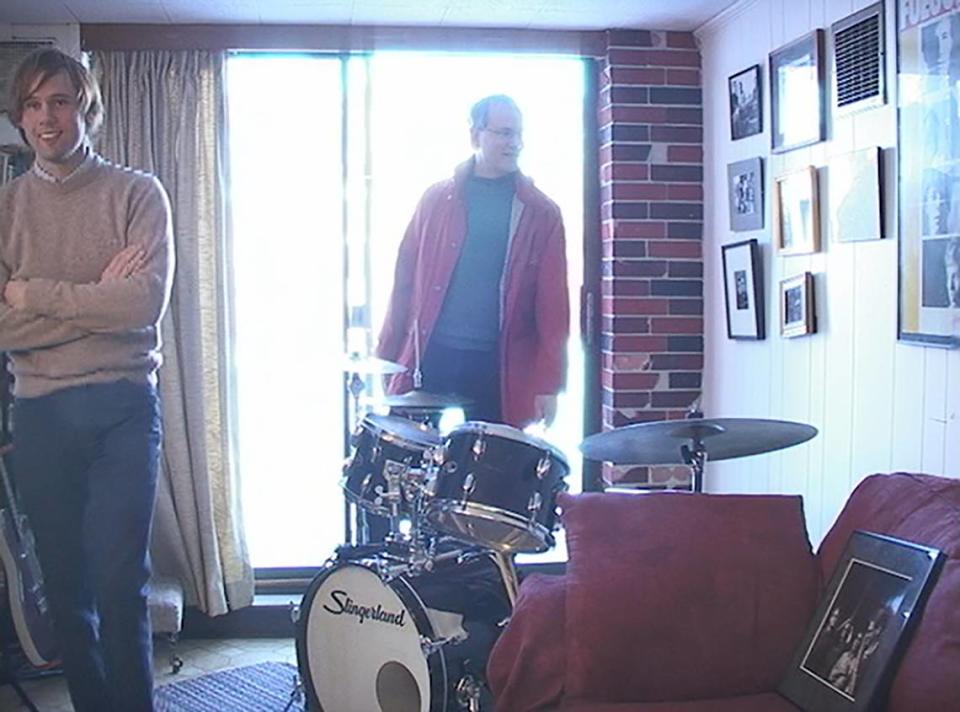
“But meeting Woody and Bill kind of planted the seed, and I got back in touch with them two years later after I read ‘Our Band Could Be Your Life,’ the Michael Azerrad book about American underground music in the 1980s,” Fetherston said. “I felt like the Embarrassment should have been a chapter in that book. So I said, ‘I’m going to make my own DIY movie about my favorite post-punk band.’ I started driving to Boston to talk to those guys, and I filmed a reunion show in Kansas in 2006.”
But Fetherston was constantly on the road with his band, making it hard to squeeze in editing and interviews. By 2009, the project was fully on the back burner.
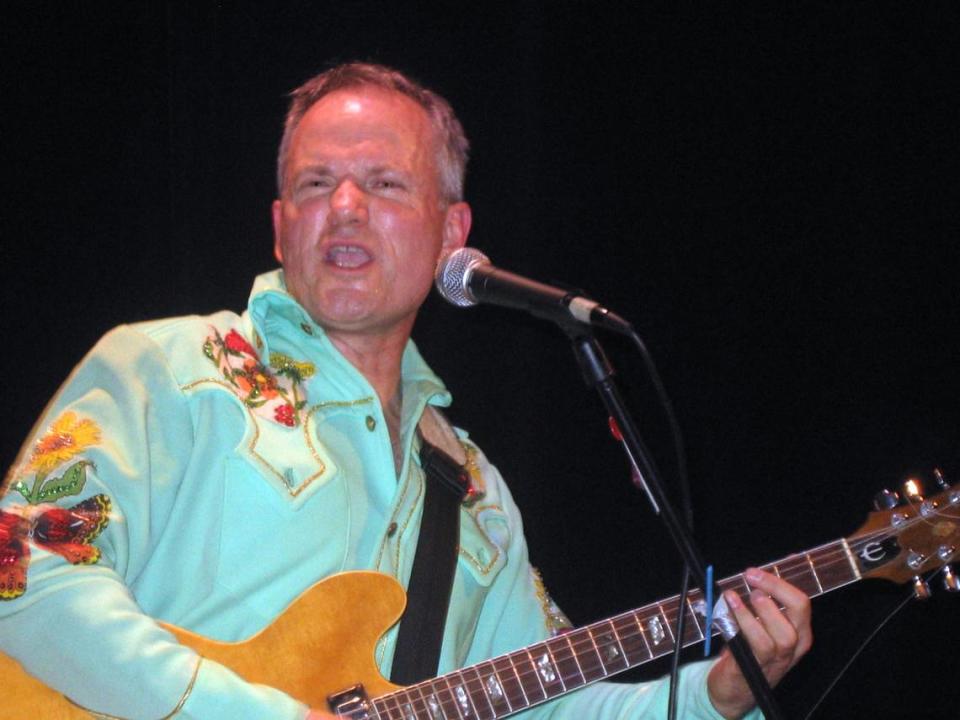
Independent of Fetherston, Szlauderbach started work on his own Embarrassment documentary in 2016. Raised in Wichita, Szlauderbach was introduced to the band as a teenager by his older brother.
“It was at the same time as I was getting into the Velvet Underground, the Clash, the Ramones,” he said. “They seemed of the same era and worthy of the same praise as those bands, but they weren’t really known, and they were from the same place as me. Hearing the music, seeing photos of them — it just created this image in my mind that really stuck with me.”
Szlauderbach leveraged some Wichita connections to research the band and reach out to the members. It didn’t take long until somebody mentioned that another guy had done the same thing 10 years before.
“It weirdly wasn’t disappointing for me,” Szlauderbach said. “It kind of confirmed the importance of the band in my mind. Like, ‘Of course somebody was already working on something like this, and he’s not even from Kansas.’”
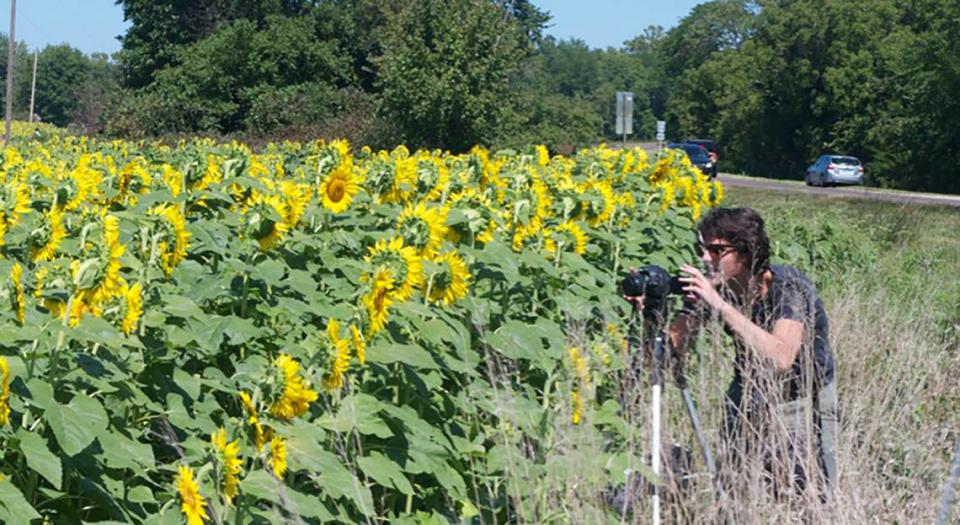
He called Fetherston and proposed joining forces. They soon launched a successful Kickstarter campaign to help finance finishing the film. Sign of the times: The show at the Orpheum will be the first time Fetherston and Szlauderbach have ever met in person. They pieced together the documentary from their respective computers in Lawrence and New York. “I’m looking forward to giving Danny a big hug,” Fetherston said.
The final product includes footage from the aforementioned Flatiron performance and interviews with the band members, some of which Fetherston conducted 15 years ago. Fetherston and Szlauderbach also wrangled some of the band’s more famous admirers, including Evan Dando of the Lemonheads, Grant Hart of Hüsker Dü and Kansas author (and Embos fan from back in the day) Thomas Frank.
Wichita is a kind of character in the film, too, with Fetherston and Szlauderbach probing the dynamics around creativity in culturally isolated pockets of the country.
“It’s a documentary about a band, but I also think of it a little bit of an argument against this red-state myth that people from the middle of the country are average and boring,” Szlauderbach said. “There may be fewer artists in Kansas than in other places, but every city has its own secret cultural world and significance.”
“They weren’t imitating New York punk bands,” Fetherston said. “They were taking some of those ideas but staying true to the nerds and Kansans that they were. And out of that came this really interesting, idiosyncratic sound. The Kansas thing — that’s part of what made them so great.”
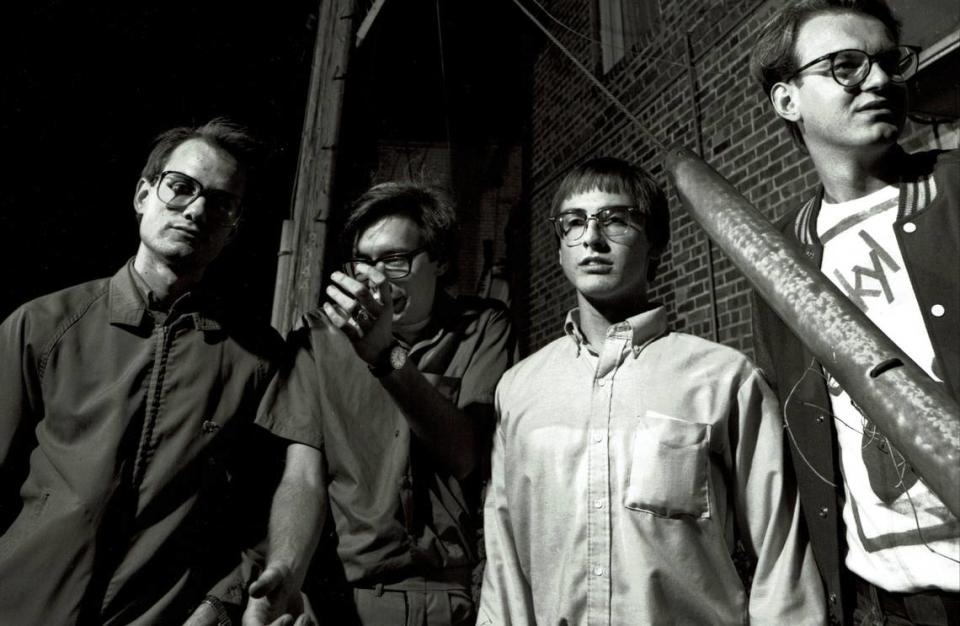
Return of the Embarassment
The documentary “We Were Famous, You Don’t Remember” makes its world premiere at 6 p.m. Friday, Sept. 30, at the Orpheum Theatre, 200 N. Broadway. Afterward, the Embarrassment will play a reunion show. Both events are part of the 2022 Tallgrass Film Festival. Tickets are $45 via tallgrassfilm.org.
The film is also available for streaming purchase starting Sept. 30. Interested in checking out the music of the Embarrassment? “Heyday 1979-193,” available on most streaming platforms, is a good place to start.
